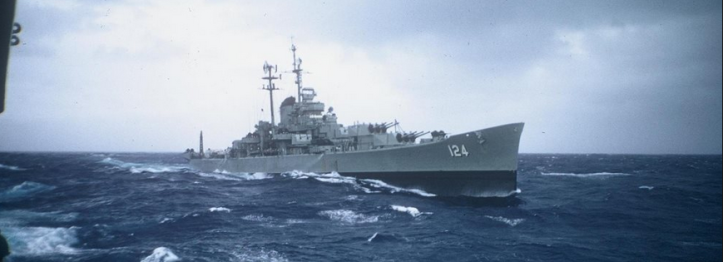Going through some family images, I ran across an image of my brothers who served in the Navy. I am not a US Navy veteran, or an Armed Services veteran of any kind, but most of my brothers served in one branch or another. Two of them, and a brother-in-law and his brother all served on the USS Rochester, CA-124), an Oregon City-class heavy cruiser. When I went looking for images of the ship, I found plenty. I found a lot of history on the ship as well. Commissioned in 1946, she served in Europe, then the Pacific, eventually taking an active part in Korean War operations. It was during those Korean conflict years that my brothers served on her.
But this post isn’t about the ship, it’s about the tool I used to improve one of the images I found online of the cruiser. Prior to using Luminar 4, a version of Luminar called Flex was offered as a free accessory to Luminar 3. It features most of the functions of 3, but misses the catalog. The tool works nicely as an plug-in to Lightroom. Since it’s smaller, the load time to export an image to Flex is faster than Luminar 4. I still use Flex if I just need to make basic adjustments to an image that doesn’t need a lot of work.
 Here’s the original photo I found online of the Rochester. I processed it in Flex before Luminar 4 was released. You’ll note the reworked image brought out lots of detail in the sky and water. Luminar Flex doesn’t have sky replacement. I used the tools built into Flex to bring out the details in the sky that were “hiding” in the gray background. Obviously the image was captured from another ship, a bit of that ship’s structure showing in the upper left. I cropped it slightly to eliminate that distraction and used the AI tools in Flex to bring out the life in this old image.
Here’s the original photo I found online of the Rochester. I processed it in Flex before Luminar 4 was released. You’ll note the reworked image brought out lots of detail in the sky and water. Luminar Flex doesn’t have sky replacement. I used the tools built into Flex to bring out the details in the sky that were “hiding” in the gray background. Obviously the image was captured from another ship, a bit of that ship’s structure showing in the upper left. I cropped it slightly to eliminate that distraction and used the AI tools in Flex to bring out the life in this old image.
John Steiner

